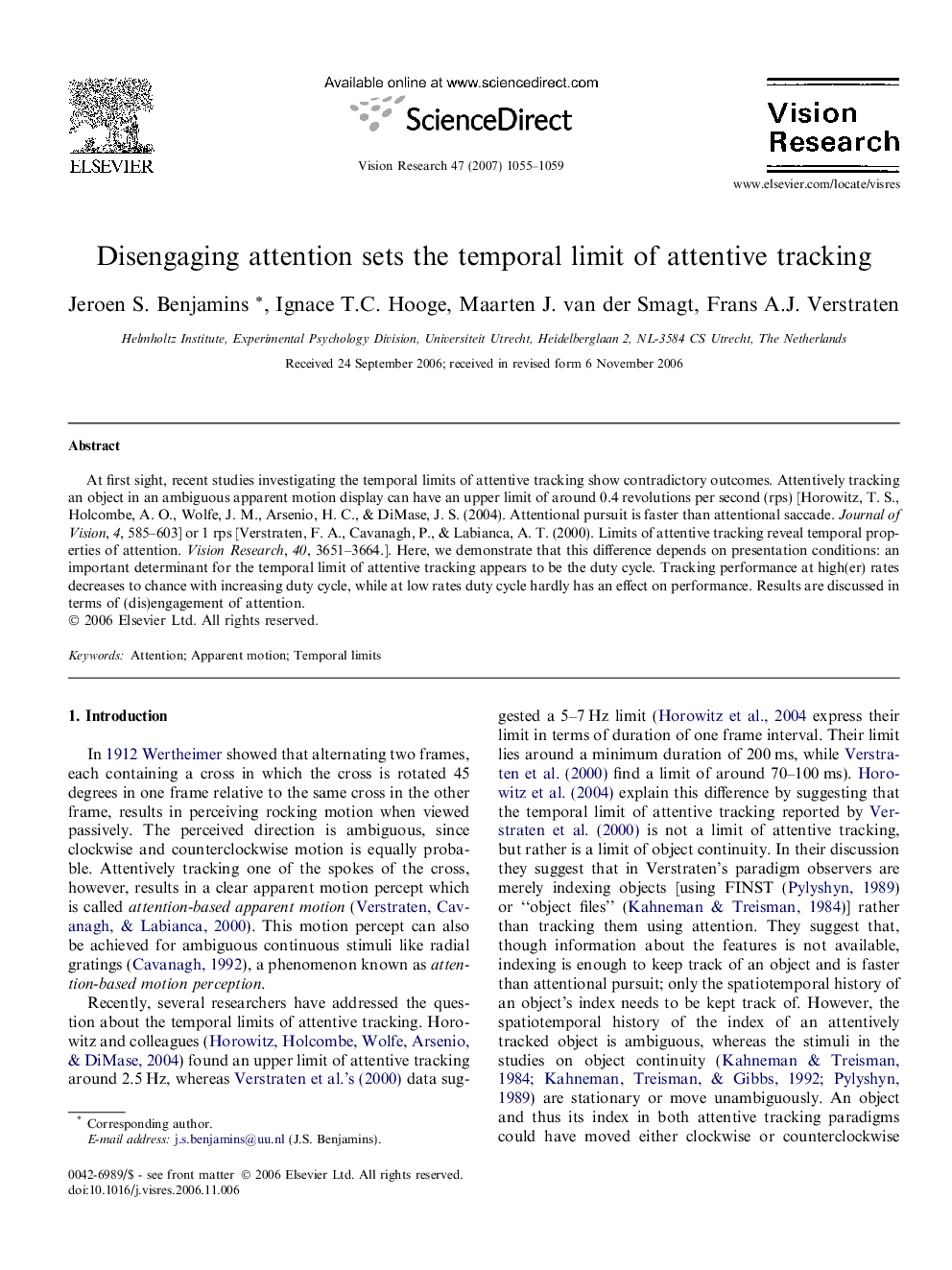| Article ID | Journal | Published Year | Pages | File Type |
|---|---|---|---|---|
| 4036394 | Vision Research | 2007 | 5 Pages |
At first sight, recent studies investigating the temporal limits of attentive tracking show contradictory outcomes. Attentively tracking an object in an ambiguous apparent motion display can have an upper limit of around 0.4 revolutions per second (rps) [Horowitz, T. S., Holcombe, A. O., Wolfe, J. M., Arsenio, H. C., & DiMase, J. S. (2004). Attentional pursuit is faster than attentional saccade. Journal of Vision, 4, 585–603] or 1 rps [Verstraten, F. A., Cavanagh, P., & Labianca, A. T. (2000). Limits of attentive tracking reveal temporal properties of attention. Vision Research, 40, 3651–3664.]. Here, we demonstrate that this difference depends on presentation conditions: an important determinant for the temporal limit of attentive tracking appears to be the duty cycle. Tracking performance at high(er) rates decreases to chance with increasing duty cycle, while at low rates duty cycle hardly has an effect on performance. Results are discussed in terms of (dis)engagement of attention.
